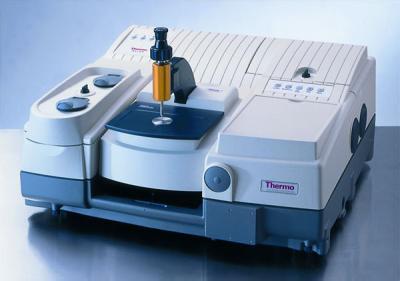 There are a variety of instruments and equipment in the laboratory. Each instrument plays an important role and plays various roles. The laboratory spectrometer is also a common device, so how much do you know about the spectrometer? This article gives a detailed introduction to the use of conventional spectrometers.
There are a variety of instruments and equipment in the laboratory. Each instrument plays an important role and plays various roles. The laboratory spectrometer is also a common device, so how much do you know about the spectrometer? This article gives a detailed introduction to the use of conventional spectrometers. The principle of emission spectroscopy used by spectrometers, emission spectroscopy (OES), is a technique used to examine and quantitatively analyze the constituent elements in materials. OES uses the fact that each element has its own unique yard structure. Each element emits a characteristic wavelength of light, or color, when absorbed into additional energy. Because no two elements have the same spectral line. So the elements can be distinguished. The brightness of the emission spectral line is proportional to the amount of the corresponding element in the oil sample so that the concentration of the element can be determined. In normal circumstances, before the excitation, each element's electrons are delivered to the oil or fuel at its lowest energy, causing the sample to vaporize.
The electrons in the atom absorb energy and are temporarily forced to leave their elemental cores to reach a higher, unstable orbit. After this unstable state is reached, the electrons release the absorbed energy and return to the ground state or stable state. The energy released is a specific value that corresponds to the energy change in the electron transition in the excited atom. Energy is emitted in the form of light, and the secondary light has a fixed frequency or wavelength (frequency is inversely proportional to wavelength), which is determined by the energy of the electronic transition. Because many different electrons of some complex atoms may have many different energy transitions, many different wavelengths of light are emitted. These spectral lines uniquely correspond to the atomic structure of an element.
The intensity of the spectral line is proportional to the concentration of the measured element in the sample. If there is more than one element in the sample, spectral lines with distinctly different wavelengths will appear for each element. In order to identify and quantify the elements that appear in the sample, these spectral lines must be separated. Usually only one spectral line is selected among many possible choices to determine the concentration of an element. The selected line is generally brighter and can be protected from the spectral lines of other elements. In order to achieve this goal, an optical system is needed. All emission spectrum analyzer systems consist of three major components. They are 1) excitation source, 2) optical system, 3) readout system.
China Clear Bond,Glass Glue Clear,Clear Bonding Glue,Transparent Glass Glue, we offered that you can trust. Welcome to do business with us.
Clear Bond,Glass Glue Clear,Clear Bonding Glue,Transparent Glass Glue
KRONYO United Co., Ltd. , https://www.kronyoglue.com